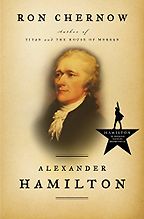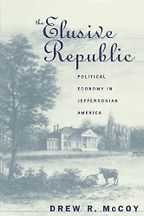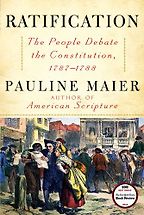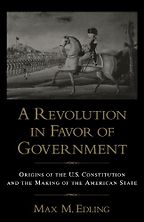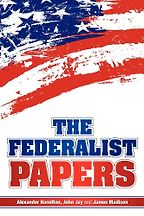Alexander Hamilton Books
Last updated: November 22, 2022
Here are our best five books on Alexander Hamilton. Alexander Hamilton was born in modest circumstances in the British West Indies in 1755. His father deserted his mother when he was young and his mother died when he was 11. In his mid-teens he travelled to the United States. During the Revolutionary War he served in the revolutionary army and was George Washington’s aide-de-camp. Subsequently Hamilton was extremely influential in the debates about the constitutional shape of the new republic, advocating a strong federal component with extensive tax-raising powers. Washington appointed him as the first US Treasury Secretary. He was killed in a duel in 1804 by the then Vice President of the United States, Aaron Burr.
The hugely successful musical, Hamilton, is based on the story of his life. The best Alexander Hamilton books are as follows:
Alexander Hamilton
by Ron Chernow
There are not many single volume biographies of Alexander Hamilton. Ron Chernow’s biography is widely considered the best of them and was used as the basis for Hamilton the musical.
The Elusive Republic
by Drew R McCoy
The subtitle of this book is ‘Political Economy in Jeffersonian America’. Jefferson was wary of industry. He thought farmers were best suited to fulfilling the role of free citizens of a republic. His vision for the American future was a continental power of small farmers. Hamilton did not share this vision. He wanted to see Commerce, industry and banking flourishing in America and thought that it was through them that America would grow strong and prosper. He did not think they would compromise the character of the citizen or the Republic overall. Ultimately, it was Hamilton’s vision that won out over Jefferson’s although the latter remained influential. This debate in the early years of the Republic is crucial in understanding the political and economic debates about the development of the country after independence and Hamilton’s influence on them.
Ratification: The People Debate the Constitution, 1787-1788
by Pauline Maier
Ratification takes the story from the framing of the Constitution to its—yes—ratification. The process was complicated and far from a done deal from the outset. There was lots of politics involved. Hamilton’s party, the Federalists, won the day over the anti-Federalists, helped by the support of Washington himself, to whom Hamilton was close and with whom he and worked and faught during the War of Independence. Remarkably, the whole process was complete within a year, with all of the original states ratifying it. This book takes you through the main debates of the process one-by-one.
A Revolution in Favor of Government
by Max M Edling
This book picks up on the story of the Federalist Papers. Hitherto historians had tended to consider Hamilton’s role in framing the US Constitution as subordinate to that of Madison. Edling shows that Hamilton was absolutely central to the process and the final outcome. Where Madison was interested in particular structures and in the protection of individual rights, Hamilton’s concerns were focused more on ensuring the state was strong enough to protect itself. He was instrumental in ensuring that Congress had unlimited powers of taxation and deepened its control over the army, the navy and the militias.
The Federalist Papers
by Alexander Hamilton & John Jay and James Madison
The Federalist papers were written by Hamilton, James Madison and John Jay. They are a series of 85 articles, written anonymously to promote the ratification of the Constitution of the United States. Hamilton wrote most of them. Karl Rove, adviser to George Bush, described the Federalist Papers to us as “a work of great philosophical theory about the nature of the American government, the nature of the American experience… The greatest explanation in one place of the American constitution, of the essential underpinnings and structures that make American democracy possible.”
